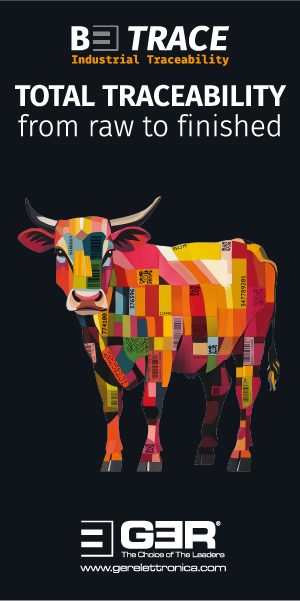Market Intelligence—30.07.24
Macroeconomics
On the political stage, there have been interesting developments, most notably with US president, Joe Biden, announcing his withdrawal from the 2024 presidential election in November.
The financial markets focused on the upcoming summer break, with the stock markets weakening at the same time. Technology stocks were particularly affected, experiencing a significant correction after their brilliant rise in recent months.
Commodities were mostly characterised by a period of weakness, with the global economy as a whole, and China in particular, moving sideways. Stocks are elevated in some cases and there is therefore a lack of truly sustainable demand.
The price of oil is hovering around $80 per barrel and the price of gold is currently unable to break free of the $2,300-$2,400 range per ounce.
Market Intelligence
With the start of the holiday season in the northern hemisphere, activity along the leather pipeline also decreases significantly.
In our last issue, we took a close look at the overcapacity in the leather industry in Europe, particularly in Italy. Overall, we painted a somewhat more positive picture of the leather industry in Asia and we would still do the same today. However, we must of course also recognise the problems there, particularly in northern China.
The small-scale structure of the leather factories in the provinces of Hebei and Shandong, many of which are heavily customised for furniture leather, is also suffering from overcapacity at the moment. Local demand for leather in China is currently not sufficient to utilise production capacity. This has led to an increase in stock levels in recent months, not only in the production facilities in the northern provinces, but also at the intermediaries for semi-finished products and finished leathers. The lack of international demand for leather, but especially for finished products such as furniture, is also playing a decisive role.
The long supply chain, which has to be forecast and planned for, is a crucial problem. From the purchase of the raw materials to the delivery of the finished leather or even the finished products takes at least six months, and usually takes up to nine months, and that is if everything runs normally. This has to be planned and financed. This poses major problems for smaller companies in particular. There is almost no certainty on the sales side owing to a lack of suitable partners. Current splitting proceeds and leather prices are calculated against a daily updated hide market. However, the actual results and parameters only emerge many months later.
We all remember that from October 2023 to March 2024 we could report an active raw materials business in northern China. In particular, those suppliers who were able to deliver the preferred cowhides for the region saw stable demand and slowly but steadily rising raw material prices. This trend ended in April and since then prices have been falling slowly but steadily.
What does this mean? Companies have built up too much stock because sales have not met expectations. These stocks have a certain average price that results from purchases over the winter. While prices had not yet fallen below the average winter price by mid-June, this has now occurred. At the same time, this means that with insufficient leather sales and increased stocks, the calculation and expectations for leather sales cannot be achieved in the coming months with the current values.
The further prices fall, the harder it will become to support any expectation of a recovery. The further prices fall, the more acute the problem for companies will become. If you also consider that these companies are not particularly well financed, then in addition to the possible losses from current business, there is also the problem of liquidity. In addition to the fact that sales are lacking, we are also increasingly hearing from customers for finished leather in China that payment behaviour here also leaves a lot to be desired.
All of this leads to a very fragile situation, and when you consider that we are only in July at the moment, it becomes all the more threatening. Without an improvement in demand for leather and a rapid easing of the liquidity situation, there will be consequences for the industry in China. At the moment, they are already reflected in many rumours that revolve around complaints about the market and possibly even contracts that have not been accepted. Everyone knows the rules and laws of doing business with China and will well be able to imagine that this could become an even bigger problem.
Coming back to Europe, it has been impossible to avoid the disappointing results of most luxury groups in recent weeks. Sales and profits were disappointing almost everywhere in the second quarter. This is more of a relative problem than an absolute one, as the absolute figures and the still-impressive profits do not represent a real risk. However, they show that the companies’ planning and market assessments have continued to miss the mark. They were so spoilt by the success of the recent past and so convinced that the exclusivity of their products could be carried further and further into society that a stagnation in sales was never imagined or planned for.
Of course, for the really rich on this earth, it may not matter at all whether they buy one or ten or 100 handbags, whether they add a few more models to their watch collections or 20 more pairs of shoes to their wardrobes. In other words, this clientele accepts higher prices at all times, but not necessarily unconditionally in every case. Customers that could bring growth are currently holding back for a variety of reasons. In many cases, this development has been offset by price increases, meaning that the absolute sales figures do not reflect a decline in volumes. Of course, none of the luxury groups will give us a truly transparent overview of the quantities sold, but it is an open secret that there are currently very high stocks of finished products in the production centres and that production is currently significantly reduced.
However, this means relatively little for the production chain at the moment. It may not be possible to sell the stocks and we do not know what their ultimate fate will be, but some factors cannot be ignored. Firstly, the financial strength of the groups is such that even such problems do not represent any financial risk. Furthermore, there is no alternative but to restock the supply for the coming seasons. This means that the demand for material and production will not necessarily decline at the same time. Certain adjustments may be made, but there will be no problems in this sector of the kind the mass manufacturers have seen.
If you transfer this to the market for high-quality raw materials, and in particular calfskins from central Europe, then the prices for raw materials have not reacted at all. This is also not surprising when you consider that the slaughter of calves has fallen significantly. This is actually a reversal of the situation with beef hides. Although demand has fallen here, supply is even stronger and there is no real alternative, unless you start looking at other raw materials at some point.
So every market has its own characteristics and must be analysed individually if you don't want to get lost in the facts. This analysis and perspective can also be extended to other areas of the various raw materials for the leather industry.
Otherwise, there is not too much to report from the leather pipeline at the moment. We are unlikely to see any major developments, at least until the All China Leather Exhibition in Shanghai from September 3-5. It would take very short-term and strong impetus for the mood to brighten before then.
The split market is also unchanged. The very positive trend in retro sneakers, many of which are made from split leather, is supporting the demand for wet blue splits. We would even go so far as to say that we are unable to meet current demand with supply. Interestingly, however, many wet blue hides have already become so cheap that it can be assumed that one or two tanners may already be buying this material and are only doing so because of the proceeds for splits. The grain has already been paid for to a large extent. This is particularly evident in markets that prefer to buy wet blue. At the same time, this means that very favourable grain is available for a longer period of time.
We have not noticed any changes in sheepskins either. In Europe, we are currently looking at lambskins for the new season. This is not particularly easy because the overall calculation of the skins still does not add up. Those tanners who still produce certain niche products and are reliant on special, raw skins are now also faced with the problem that their raw materials are only produced if all the skins are collected and sorted. This can no longer be guaranteed and so you can see that the problems in the leather industry can never be viewed in isolation. Many things are interconnected and people have never really thought about this before. It was always just about the price.
Over the next few weeks, we can and probably should look at many influences outside the leather pipeline. Because these also often have a considerable influence. Finances, logistics, cost development and international trade policy are just some of the problems that still exist. People will not want to spoil their summer holidays, but it would be advisable to think about all these possible influences and clarify what effect they might have. The general situation in the leather pipeline, which on the whole does not appear to be particularly positive, is unlikely to change in the coming weeks.












